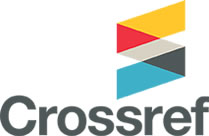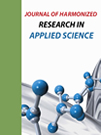ISOLATION AND CHARACTERIZATION OF FUNGI FLORA FROM THE SOIL SAMPLES OF ADEKUNLE AJASIN UNIVERSITY, AKUNGBA-AKOKO STAFF SCHOOL PLAYING GROUND
Abstract
Author(s): Olajubu, F. A. and Folorunso, V. T.
Soil is an unconsolidated or loose combination of organic and inorganic materials that support the survival and multiplication of various pathogenic and non-pathogenic microorganisms including fung i. The school playing ground is often the delight of school children as they enjoy playing with little or no supervision. This study was then designed to examining the soil samples of the playing ground to ascertain the possibility or otherwise of the children picking harmful fungi from the soil of their playing ground while recreating. The playing ground was mapped out into five regions namely West (Ws), East (Es), North (Ns), South (Ss) and Central (Cs) for sample collection. The soil plate method and hair baiting technique were used for the isolation of the fungi while the identification of the isolates was done through colonial morphology (macroscopy) and microscopy. The soil sample label Cs, collected from the Central part of the playing ground yielded more fungi species(7). The most frequently isolated fungus was Aspergillus niger. Other saprophytes isolated includes Penicilliumsp, Fusariumsp, Rhizopusstolonifer and Alternariaalternata Somekeratinophiles isolated include Chrysosporium indicum, Trichophytonmenta grophytes, Fusarimsolani and Microscoporium gypseum. Since some of these fungi species have been incriminated in some disease conditions and there is need to maintain the soil’s microbiota, it is suggested that the students be well guided as regard developing and maintaining simple hygienic culture and not in support of any form of soil treatment. Key words: Playing ground; fungi; keratinophiles; AAUA; Staff school.










